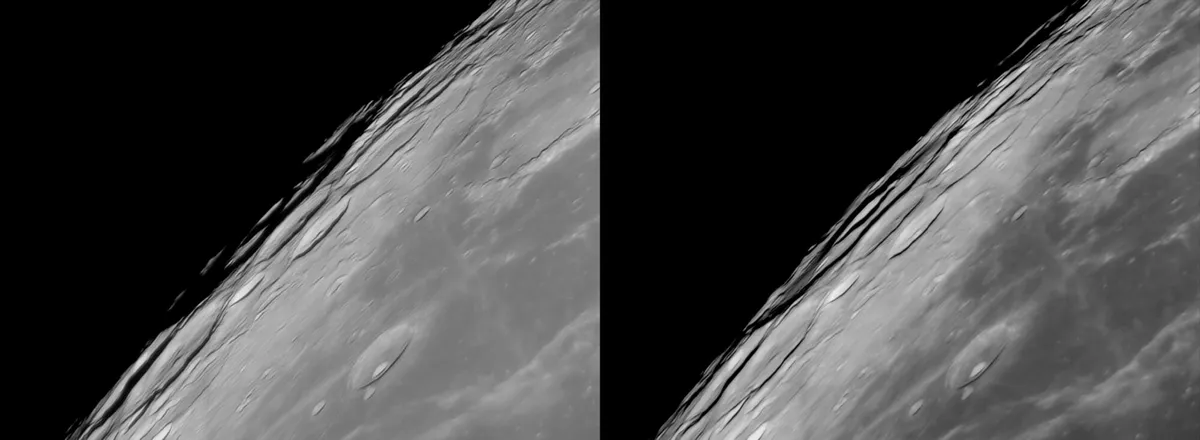Moon shadows are among the most mesmerising features to observe on the lunar surface. And if you time it right, you can see shadows cast by a chosen lunar feature move over time, allowing you to see that feature in a new light.
Photographs or even sketches of Moon shadows changing over time are a good way of making a scientific record of the phenomenon, but also a great excuse to get out and produce some beautiful images of the Moon.
For help with this, read our guides on how to draw the Moon and how to photograph the Moon.
Discover the most famous lunar shadows with our guide to clair-obscur effects on the Moon, and get observing upclose with our guide to the best telescopes for beginners

Movement of Moon shadows
The Moon appears to move by an average of 13.2º against the background stars every day, a consequence of its orbital movement around the Earth–Moon centre of gravity or barycentre.
This movement changes the Sun–Moon–Earth angle and consequently the position of the terminator - the line dividing lunar day from night - on the lunar globe.
Over the course of a synodic month (29.53 days) the morning or evening terminator will have moved completely around the globe.
A good challenge is to see and record a hint of that movement.

Observing shadows on the Moon
Observing the movement of shadows on the Moon would be hard a widefield view that shows you the whole lunar disc, but it’s much easier to see using a magnified view.
The Moon presents its best shadows near the terminator. Here the shadows are exaggerated and appear to change relatively quickly compared to those further from the terminator.
In addition, the apparent motion of the terminator is different, depending on where itis on the Moon’s globe.
Movement is maximised when the terminator is near the first or last quarter phases and fastest near the centre of the Moon’s disc.
This isn’t to say the movement can’t be seen or recorded away from these phases or positions, but rather that the changing shadow effects are greatest at these times and locations.

Recording changing shadows on the Moon
The best recording strategy is to pick a feature with good relief elements, mountains or deep craters being obvious candidates.
Plan so you will be able to see the Moon for a period of a few hours, preferably with it located at a reasonable altitude.
As well as position planning, take into consideration the local weather forecast.
Although cloud cover can be unpredictable, choosing a time which is forecast to be clear will be better than choosing a time when a weather system is about to cross the sky!
For advice, read our guide to weather forecasting for astronomy.

Centre your chosen feature and make an observation of it.
This could be a sketch or image, concentrating on the position of existing shadows or small patches of sunlight visible in dark shadowed areas.
Then wait, say, 30 minutes and do a similar observation. Repeat for as long as possible.
Comparing your results will show just how fast shadows on the lunar surface can appear to move.
It’s also a fascinating way to perceive the 3D nature of the lunar surface, the movement of the shadows giving relief features a more pronounced feeling of depth.
If you have success, consider trying again with other features and create a library of lunar shadow movements.
Have you observed or even recorded moving shadows on the lunar surface? Let us know by emailing contactus@skyatnightmagazine.com.
This guide originally appeared in the August 2022 issue of BBC Sky at Night Magazine.
